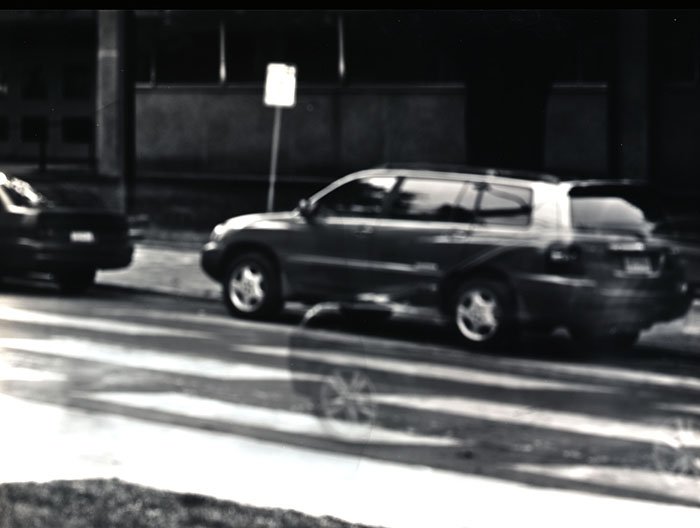Tyler Photography and Architecture students and faculty collaborate to build a room-sized pinhole camera and “mobile gallery” to activate public spaces and spark curiosity
Students and faculty in the Tyler School of Art and Architecture’s Photography and Architecture programs have constructed a giant, movable pinhole camera—also known as a camera obscura—as a tribute to the history of a centuries-old medium and as a public art gallery.
Laurie Beck Peterson, a Philadelphia-based commercial photographer and adjunct faculty member in Tyler’s Photography program, is always looking for spaces to convert into a camera obscura. “It’s a great way to teach students how a camera functions technically before they build their own in class,” she said. “It’s simple but it’s magic.”
A camera obscura takes advantage of a natural optical phenomenon that occurs when a scene is projected through a small hole in a light-proof box as an inverted, reversed image on an opposite surface. But Tyler’s “box”—at 7 feet tall, 5 feet wide and 9 feet long—is more of a spacious room on wheels that participants actually enter to make photographs, which are then processed by students in Tyler’s Fine Art Photography Club.
Stephen Anderson, assistant professor of instruction in architecture and co-developer of the large camera, was familiar, in particular, with camera obscura’s history in renaissance gardens, which wasn’t about collecting the image, but the experience. He worked with Architecture students on this extracurricular project’s design and construction, measuring doorways, elevators and ramps so it could capture imaginations anywhere on Temple’s urban campus.
“Students don’t get enough of this experience,” Stephen said, “like operating within a tight budget and timeline or overcoming unexpected challenges. When you work in the real world with real tools, you confront a whole new set of problems and creative opportunities to deal with.”

Ranjoti Longia, "Fast Car.” Photo taken on Ortho–Lithographic film with The Tyler School of Art and Architecture Mobile Camera Obscura. 8 minute exposure. © 2019 Ranjoti Longia. All rights reserved.
“This project was a lesson in craftsmanship,” says Hyun-tae (Isaac) Cho, a sophomore in Architecture, “and in realizing a project from plans to construction. As an architect, I want to make things that facilitate interaction or discussion. The camera obscura has the ability to show you the same places you pass every day in a new and interesting way.”
“It’s great when two different disciplines come together to realize an idea,” said Ranjote (Joti) Longia, a senior Photography major. “We had to truly work together to problem solve and troubleshoot minor issues along the way—I learned a lot.”
In addition to learning the practice of the medium, photography students who volunteered on this project were obligated to tackle the user experience of the camera. They drafted operating instructions accessible to both novice and professional photographers that explained complex photographic principles from aperture size to exposure lengths.
As photographs are processed, they will be exhibited on the camera’s exterior, inviting curiosity and creativity. “It’s a mobile gallery,” Laurie said. “We’re an art school—we want to share our intrigue with this phenomenon with other people.”
“Creating this object for the public is a great way to introduce them to Tyler,” Joti said. “And it brings people together to talk about art.”